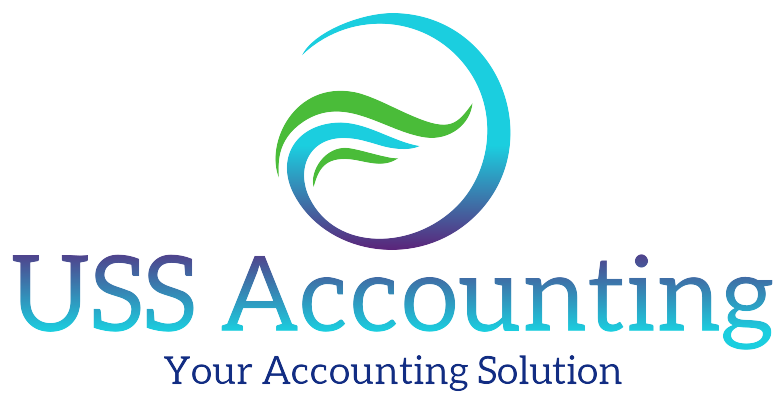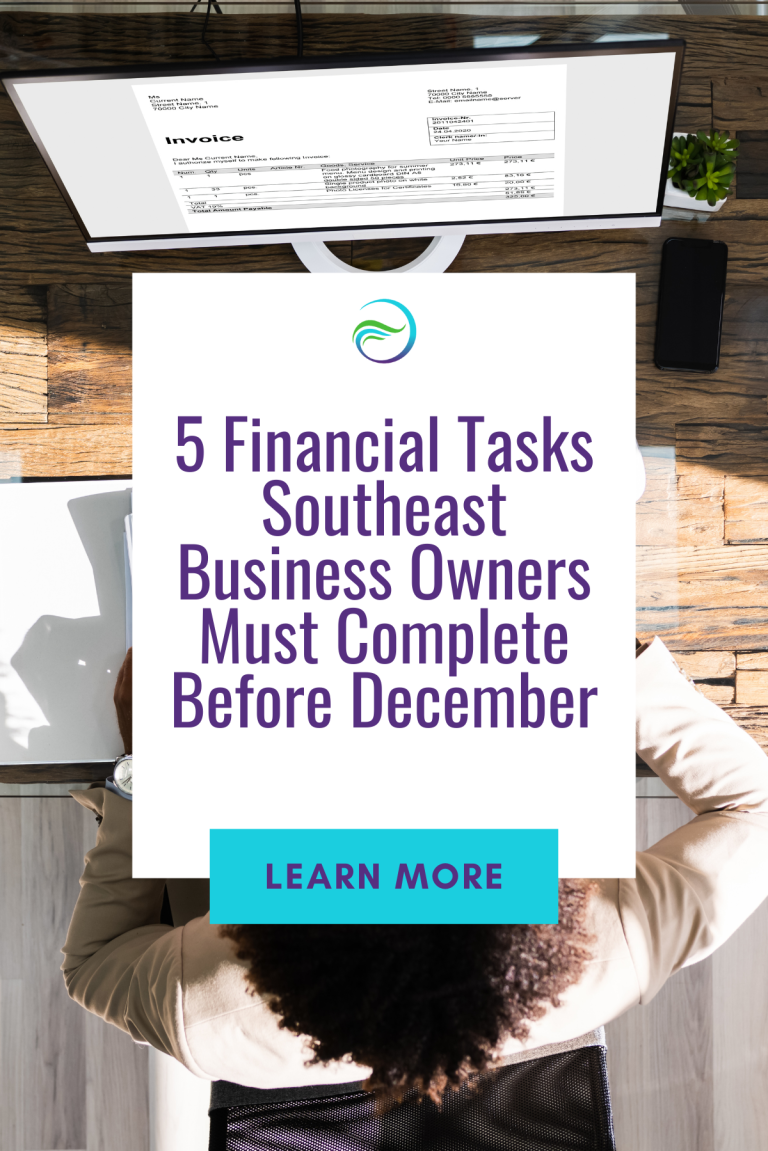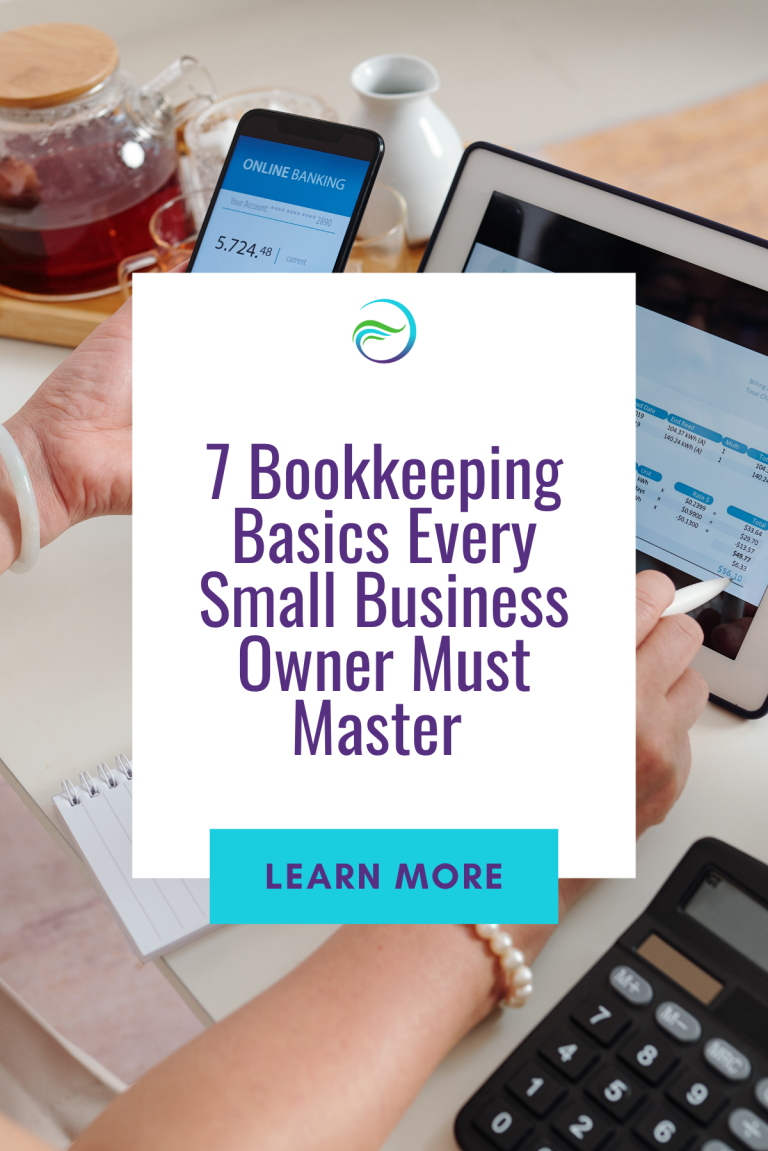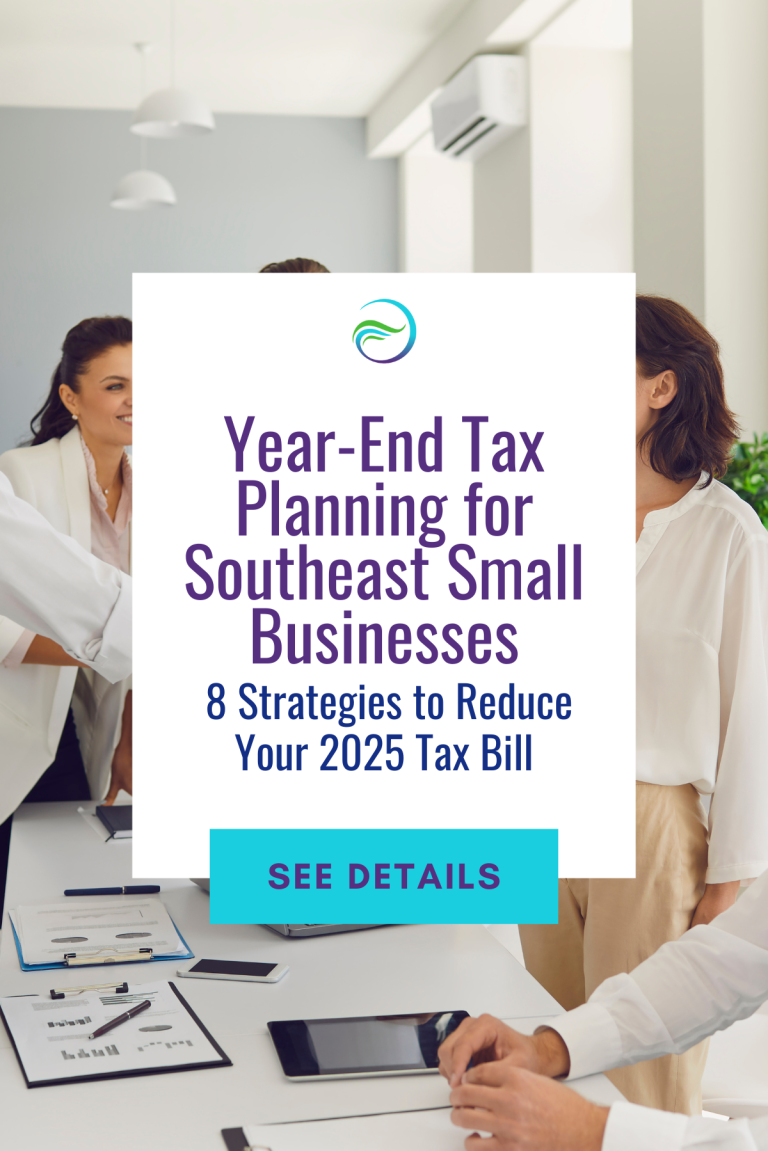
Q4 Financial Moves That Position Southeast Businesses for 2026 Success
The Q4 Fiscal Opportunity Window
Fourth quarter isn’t just about surviving the holiday rush and closing out the year. For smart Southeast business owners, Q4 is when you make the strategic financial moves that set you up to dominate 2026. While your competitors are scrambling through year-end chaos, you’ll be executing a plan that positions your business for explosive growth.
Most businesses treat Q4 like damage control. But here’s what the most successful companies in Atlanta, Charlotte, and Greenville-Spartanburg know: Q4 is actually your biggest opportunity window of the year. Here’s why:
- Tax planning strategies can save 15-25% on your 2025 tax bill
- Interest rates are still favorable for expansion moves
- Your 2026 budget planning determines if you lead or follow
- Cash flow optimization now prevents holiday season disasters
- Strategic equipment purchases maximize deductions
- Banking relationships reset for the new year
- Technology implementations can start fresh in January
- Competitive positioning happens while others coast
The Southeast Advantage in Q4 Planning
Working with businesses across our region, we see patterns that give Southeast companies huge advantages during Q4 planning:
Atlanta Tech Ecosystem:
Q4 is enterprise contract season. Companies with clean, current financials consistently win larger deals because they can demonstrate stability and growth trajectory. We’ve seen clients increase average contract values by 30-40% simply by having professional financial presentations ready.
Hypothetical scenario: An Atlanta SaaS company competing for a $500K enterprise contract. Their competitor has better features, but a well-prepared company’s audited financials and growth projections convince the enterprise buyer they’re the safer long-term bet. Clean books = competitive advantage.
Charlotte Financial Hub:
Banking relationships matter most in Q4 when institutions are setting credit policies for the new year. Professional financial management opens doors to better credit terms, higher limits, and preferred customer status.
Specific advantage: Charlotte businesses that maintain monthly financial statements and cash flow projections get credit decisions 60% faster than those scrambling with annual tax returns.
Greenville-Spartanburg Manufacturing Corridor:
Equipment purchases before year-end can significantly reduce tax liability while boosting 2026 capacity. The manufacturing ecosystem here creates unique opportunities for supply chain financing and equipment leasing that other regions don’t offer.
Regional insight: BMW and Michelin’s supplier networks often announce 2026 capacity requirements in Q4. Businesses with financial readiness can secure lucrative supply contracts while competitors are still figuring out their cash position.
Strategic Move #1: Advanced Tax Optimization Before December 31
This isn’t about scrambling in December. Smart tax planning happens in October with implementation through November. Here’s what USS Accounting specializes in helping clients execute right now:
Equipment and Technology Purchases:
Section 179 deductions allow up to $1.16 million in equipment purchases to be fully deducted in 2025. But the key is strategic timing and cash flow management.
Consider this scenario: A $2M Charlotte consulting firm reviews their projected 2025 income and realizes they’ll hit a higher tax bracket. By accelerating some 2026 equipment purchases into Q4 2025, they could save $40K in taxes while upgrading their technology infrastructure. The key is structuring purchases to maintain cash flow for Q1 2026 operations.
Retirement Contribution Strategies:
Business owners can contribute up to $69,000 to SEP-IRAs or $23,000 to 401(k)s, plus catch-up contributions for those over 50. For profitable businesses, this creates immediate tax savings while building wealth.
Business Structure Optimization:
Many Southeast businesses outgrow their initial LLC or S-Corp structure. Q4 is the perfect time to evaluate whether restructuring could save taxes and provide operational advantages.
Hypothetical example: Consider a Greenville manufacturing business that switches from LLC to S-Corp structure, potentially saving $18,000 annually in self-employment taxes while gaining better employee benefit options.
Expense Timing Strategies:
- Accelerate deductible expenses into 2025
- Defer income into 2026 where possible
- Pre-pay business insurance and professional services
- Maximize business meal and entertainment deductions
- Optimize vehicle and equipment depreciation schedules
Ready to optimize your tax strategy? Schedule your free Q4 tax planning consultation to identify potential savings before year-end.
Strategic Move #2: 2026 Budget Creation That Actually Works
Most business budgets are wishful thinking documents. Here’s how to create a budget that becomes your growth roadmap:
Start with Cash Flow Reality, Not Revenue Dreams:
Professional 13-week cash flow projections account for seasonal variations, growth investments, and contingency planning. This isn’t just spreadsheet exercise – it’s strategic planning that drives decision-making.
Regional Cash Flow Patterns We Track:
- Atlanta: Tech companies see Q1 contract renewals but Q2 expansion discussions
- Charlotte: Financial services companies experience Q4 deal acceleration but Q1 implementation lag
- Greenville-Spartanburg: Manufacturing sees Q4 inventory builds followed by Q1 payment cycles
Detailed Budget Components:
- Revenue Forecasting: Base, optimistic, and conservative scenarios
- Operating Expense Planning: Fixed costs, variable costs, and growth investments
- Capital Expenditure Scheduling: Equipment, technology, and facility improvements
- Working Capital Requirements: Inventory, receivables, and payment timing
- Contingency Planning: Economic downturns, supply chain disruptions, key employee departures
Illustrative example: An Atlanta logistics company planning 30% growth needs to understand when they’ll hit cash flow pressure points. Financial modeling might show they’ll need additional working capital in March 2026 – making Q4 the ideal time to secure that credit line while 2025 numbers look strong and credit is readily available.
Strategic Move #3: Holiday Season Cash Flow Mastery
The holidays can make or break small businesses. Here’s what separates the winners from the casualties:
For B2B Companies:
Plan for the December payment slowdown. Many clients don’t pay invoices between December 15 and January 15. Smart companies front-load Q4 invoicing and offer early payment discounts.
Cash flow strategy: Invoice major clients by November 15th for December work. Offer 2% 10-day payment terms to accelerate collections before the holiday freeze.
For B2C Companies:
Inventory financing and sales forecasting become critical. Over-ordering kills cash flow; under-ordering kills opportunity. Southeast retail businesses need to account for different seasonal patterns than national averages.
Regional consideration: Greenville-Spartanburg shoppers tend to buy later in the season compared to Atlanta early shoppers. Charlotte business buyers often delay purchases until January for budget reasons.
For Service Companies:
Q4 is when you lock in Q1 contracts. Clean financials help you win better deals and negotiate better payment terms.
Advanced Cash Flow Strategies:
- Negotiate 30-day payment terms with suppliers during your slow collection period
- Establish seasonal credit lines specifically for holiday cash flow gaps
- Create incentive programs that encourage early customer payments
- Develop alternative revenue streams that counter-balance seasonal slowdowns
Worried about holiday cash flow? Book your cash flow strategy session to develop a customized plan.
Strategic Move #4: Technology Investments for Competitive Advantage
With AI adoption hitting 60% among small businesses, Q4 is when you make technology investments that separate you from competitors in 2026.
But here’s the critical distinction: Technology without proper financial tracking is just expensive overhead. Professional automated reconciliation and real-time reporting ensures measurable return on investment (ROI).
Technology Investment Categories:
- Financial Management Systems: Cloud-based accounting, automated reconciliation, real-time reporting
- Customer Relationship Management: Sales pipeline tracking, customer lifetime value analysis
- Operational Efficiency Tools: Project management, time tracking, automated invoicing
- Business Intelligence Platforms: Data analytics, performance dashboards, predictive modeling
ROI Measurement Framework:
Every technology investment should have clear metrics:
- Time savings (quantified in hours and dollar value)
- Error reduction (cost of mistakes prevented)
- Revenue enhancement (new opportunities or improved pricing)
- Cost reduction (eliminated processes or reduced labor)
Imagine this scenario: A Charlotte financial services firm invests $15,000 in automated client reporting tools. Within 90 days, they might reduce report preparation time by 20 hours per week (potentially saving $40,000 annually in labor costs) while improving client satisfaction scores by 25%.
The Growth Readiness Assessment: Are You Ready for the Next Level?
Before you make any major moves, ensure you have the right components in place:
Financial Infrastructure:
- Current financial statements (within 15 days, not 30)
- Monthly cash flow statements and 13-week projections
- Customer profitability analysis by segment
- Vendor payment optimization schedule
- Credit facility reviews and optimization
Tax and Compliance:
- 2025 tax projection and optimization strategy
- Quarterly tax payment scheduling
- Payroll tax compliance verification
- State and local tax obligation reviews
- Audit trail documentation for all major transactions
Strategic Planning:
- 2026 revenue and growth targets with supporting assumptions
- Competitive analysis and market positioning review
- Key Performance Indicator (KPI) tracking systems
- Risk management and contingency planning
- Banking relationship optimization
Technology and Operations:
- IT infrastructure capacity planning
- Cybersecurity audit and updates
- Business continuity plan testing
- Employee handbook and policy updates
- Insurance coverage review and optimization
If you’re missing more than 2 of these components, your financial infrastructure isn’t ready for serious growth.
Book your Growth Readiness Assessment to identify gaps and create an action plan.
Month-by-Month Q4 Action Plan
October Focus:
- Complete 2025 tax strategy review and implementation planning
- Finalize 2026 budget with detailed cash flow projections
- Begin technology vendor evaluations and implementation planning
- Optimize banking relationships and credit facilities
November Execution:
- Implement tax optimization strategies (equipment purchases, expense timing)
- Accelerate Q4 sales and collection efforts
- Begin technology implementations with January go-live targets
- Conduct year-end employee reviews and compensation planning
December Optimization:
- Execute final tax moves and documentation
- Implement holiday cash flow management strategies
- Complete 2026 strategic planning and goal setting
- Conduct comprehensive year-end financial analysis and lessons learned
Why Most Businesses Fail at Q4 Planning
They wait until November to start thinking about it. By then, your options are limited, your stress is maximized, and your competitors who planned ahead are already executing.
The businesses that thrive start their Q4 planning in October, execute strategic moves through November, and cruise through December while competitors panic.
Regional Success Patterns We’ve Observed:
Common patterns in our regional markets include:
- Atlanta tech companies that implement Q4 planning often see stronger Q1 performance
- Charlotte financial services firms with October preparation tend to secure better credit terms and client contracts
- Greenville-Spartanburg manufacturers that optimize Q4 frequently position themselves for Q1 supply contract opportunities
Frequently Asked Questions About Q4 Financial Planning
Q: Should I accelerate major equipment purchases into Q4 for tax benefits even if I don’t immediately need them?
A: Strategic timing is key. Equipment purchases should align with business needs AND provide tax advantages. Consider cash flow impact, financing terms, and actual business utility. The best approach often involves planning 2026 needs and accelerating the timeline for tax benefits while ensuring purchases support genuine growth objectives. Never buy equipment solely for tax deductions—that’s spending a dollar to save 30 cents. However, if you’ll need the equipment in Q1 2026 anyway, buying it in Q4 2025 gives you immediate tax benefits while serving real business needs.
Q: How do I know if my business is ready for aggressive growth planning in 2026?
A: Growth readiness depends on financial infrastructure, not just revenue goals. Key indicators include: current financial statements within 15 days, 13-week cash flow projections, customer profitability analysis, and optimized banking relationships. If you’re missing these foundations, focus on infrastructure before expansion. Ask yourself: Can I maintain my current profit margins at 2x revenue? Do I have systems that work without my daily involvement? Can I access growth capital quickly? If you answered no to any of these, strengthen your foundation first.
Q: What’s the biggest Q4 planning mistake you see Southeast businesses make?
A: Waiting until November to start thinking strategically. By then, tax optimization options are limited, credit decisions are delayed, and holiday cash flow challenges become crises instead of planned management opportunities. October planning creates options; November planning limits them. The second biggest mistake is focusing only on tax savings without considering cash flow impact. Saving $30K in taxes but creating a $50K cash flow crisis in Q1 is bad strategy. Professional Q4 planning balances tax optimization with operational cash needs.
Q: How can I ensure my 2026 budget is realistic and not just wishful thinking?
A: Build your budget from the bottom up, not top down. Start with historical data: What was your actual revenue and expense pattern in 2025? Then layer in specific growth initiatives with realistic assumptions. For example, instead of “increase revenue 30%,” detail: “add 2 salespeople in Q1 (cost: $150K, expected revenue: $400K by Q4).” Create three scenarios—conservative (10% growth), base (20% growth), and optimistic (30% growth)—so you can adjust throughout the year. Most importantly, review monthly and adjust quarterly. A budget that sits in a drawer until December is worthless. Professional financial planning services ensure your budget becomes a living document that guides decisions, not a forgotten spreadsheet.
Need help creating a realistic 2026 budget? Check our Frequently Asked Questions for more planning insights.
Ready to Make Q4 Your Competitive Advantage?
At USS Accounting, we specialize in turning Q4 from survival mode into growth mode. Our clients enter 2026 with clear roadmaps, optimized tax positions, and the financial infrastructure to capitalize on opportunities while their competitors are still recovering from holiday chaos.
The difference between companies that struggle and those that thrive often comes down to one factor: strategic Q4 planning executed with professional precision.
Don’t let this opportunity window close. Your 2026 success starts with the decisions you make this October.
Schedule your complimentary Q4 Strategy Session today and position your Southeast business for 2026 dominance.






